
Kitchen cabinet refacing is an affordable way to give your kitchen a fresh, updated look without the cost and hassle of a complete remodel. This process involves updating the exterior of your existing cabinets, making them look brand new. It's a great option for homeowners looking to enhance their kitchen's aesthetic as part of a comprehensive kitchen remodeling service.
- Cost of Kitchen Cabinet Refacing
- Affordable Kitchen Cabinet Refacing Options
- Factors Influencing the Cost
- Pros and Cons of Kitchen Cabinet Refacing
- Advantages of Refacing Kitchen Cabinets
- Potential Drawbacks to Consider
- Materials and Styles for Kitchen Cabinet Refacing
- Popular Refacing Materials and Their Benefits
- Trending Styles in Cabinet Refacing
- Step-by-Step Guide to Kitchen Cabinet Refacing
- DIY Kitchen Cabinet Refacing Steps
- Professional Refacing Process Explained
- DIY vs Professional Cabinet Refacing
- Pros and Cons of DIY Cabinet Refacing
- When to Hire a Professional Refacing Service
- Maintenance Tips for Refaced Cabinets
- How to Maintain Your Refaced Cabinets
- Best Cleaning Products for Refaced Cabinets
- Comparing Refacing, Refinishing, and Replacing
- Differences Between Refacing and Refinishing
- When to Choose Refacing Over Replacing
- Common Mistakes to Avoid in Cabinet Refacing
- Avoiding Pitfalls in the Refacing Process
- Tips for a Successful Refacing Project
- Final Thoughts on Affordable Kitchen Cabinet Refacing
- Frequently Asked Questions
- What is the cost of refacing the kitchen cabinet?
- How long does kitchen cabinet refacing take?
- Can I reface my kitchen cabinets myself?
- What materials are best for cabinet refacing?
- Does refacing improve the durability of cabinets?
- Get Started with Your Kitchen Cabinet Refacing Project
Cost of Kitchen Cabinet Refacing
Kitchen cabinet refacing is a cost-effective alternative to replacing your cabinets. It allows you to achieve a new look at a fraction of the cost.
Affordable Kitchen Cabinet Refacing Options
There are several ways to reface your kitchen cabinets affordably. You can choose from a variety of materials, each with its price range and benefits.
- Laminate Finish: Costs range from $100 to $200 per linear foot.
- Wood Veneer: Higher-end option, costing up to $455 per linear foot.
Factors Influencing the Cost
Several factors can affect the cost of kitchen cabinet refacing. Understanding these can help you budget more accurately.
- Material Choice: Different materials come with varying costs.
- Labor Costs: Hiring professionals versus DIY can impact the total expense.
- Kitchen Size: Larger kitchens will naturally cost more to reface.
- Additional Features: Adding new hardware or accessories can increase costs.
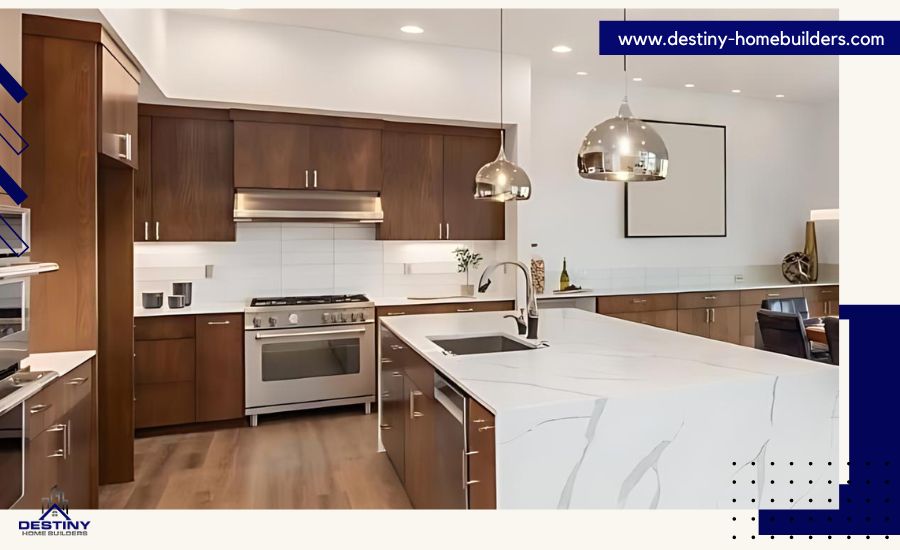
Pros and Cons of Kitchen Cabinet Refacing
Before deciding on kitchen cabinet refacing, it’s important to weigh the pros and cons. This will help you determine if it’s the right choice for your kitchen upgrade.
Advantages of Refacing Kitchen Cabinets
Refacing kitchen cabinets offers many benefits. It’s a popular choice for homeowners looking to refresh their kitchens without major renovations.
- Cost-Effective: Significantly cheaper than replacing cabinets.
- Less Disruptive: Allows you to keep using your kitchen during the process.
- Eco-Friendly: Reduces waste by reusing existing cabinet structures.
- Variety of Styles: Numerous materials and finishes to choose from.
Potential Drawbacks to Consider
While refacing has many advantages, there are also some potential drawbacks to keep in mind.
- No Structural Changes: Refacing does not improve cabinet structure.
- Limited Layout Options: The existing layout remains unchanged.
- Possible Need for Professionals: Some refacing tasks require skilled labor.
Materials and Styles for Kitchen Cabinet Refacing
Choosing the right materials and styles for your kitchen cabinet refacing project is crucial. This decision will impact the overall look and durability of your cabinets.
Popular Refacing Materials and Their Benefits
There are several materials available for kitchen cabinet refacing, each offering unique benefits.
- Laminate: Affordable and available in many colors and patterns. It's easy to clean and maintain.
- Wood Veneer: Provides a natural, high-end look. Comes in various wood species, offering a classic finish.
- Thermofoil: Durable and resistant to moisture. Ideal for kitchens where spills and humidity are common.
Trending Styles in Cabinet Refacing
Staying up-to-date with the latest trends can help you choose a style that not only refreshes your kitchen but also adds value to your home.
- Modern Minimalist: Clean lines, neutral colors, and minimal hardware.
- Rustic Charm: Natural wood finishes, distressed looks, and earthy tones.
- Classic Elegance: Traditional designs with ornate details and rich wood stains.
- Contemporary: Sleek finishes, bold colors, and innovative materials.
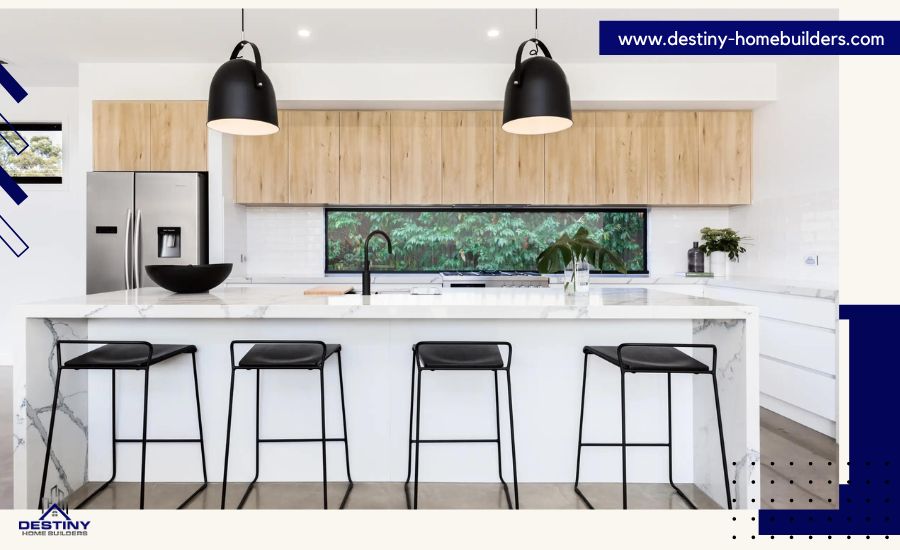
Step-by-Step Guide to Kitchen Cabinet Refacing
Refacing your kitchen cabinets can be done through a DIY approach or by hiring professionals. Understanding both processes can help you decide which path to take.
DIY Kitchen Cabinet Refacing Steps
Refacing cabinets yourself can save money and give you a sense of accomplishment. Here are the basic steps involved.
- Remove Cabinet Doors and Hardware: Take off doors, drawer fronts, and all hardware.
- Clean and Prepare Surfaces: Thoroughly clean and sand the surfaces to ensure proper adhesion.
- Apply Veneer or Laminate: Measure, cut, and apply the veneer or laminate to the cabinet frames.
- Install New Doors and Drawer Fronts: Attach the new doors and fronts to the cabinets.
- Replace Hardware: Install new handles, knobs, and hinges.
Professional Refacing Process Explained
Hiring professionals for kitchen cabinet refacing can ensure a high-quality finish. Here's what to expect from the process.
- Consultation and Measurement: Professionals assess your kitchen and take precise measurements.
- Material Selection: Choose the materials and styles with expert guidance.
- Preparation and Removal: Professionals remove old doors and hardware, then prep the surfaces.
- Application of Veneer or Laminate: They carefully apply the chosen materials to the cabinet frames.
- Installation of New Components: New doors, drawer fronts, and hardware are installed.
- Final Touches and Inspection: A final inspection ensures everything is properly aligned and finished.
DIY vs Professional Cabinet Refacing
Deciding whether to tackle cabinet refacing yourself or hire professionals depends on several factors, including budget, skill level, and desired results.
Pros and Cons of DIY Cabinet Refacing
DIY cabinet refacing can be rewarding but comes with its own set of challenges.
Pros:
- Cost Savings: Doing it yourself can save a significant amount of money.
- Personal Satisfaction: Completing the project can be very fulfilling.
- Customization: You have full control over the design and process.
Cons:
- Time-Consuming: DIY refacing can take a lot of time and effort.
- Skill Level Required: Properly applying materials requires some skill and experience.
- Risk of Mistakes: Errors in measurement or application can lead to poor results.
When to Hire a Professional Refacing Service
Hiring a professional can ensure a polished, high-quality finish and save you time and stress.
- Complex Projects: For intricate designs or large kitchens, professionals can handle the complexity better.
- Time Constraints: If you need the project completed quickly, professionals can expedite the process.
- Quality Assurance: Professionals offer a level of expertise and precision that ensures a durable and attractive finish.
- Guaranteed Results: Many professional services provide warranties and guarantees for their work.
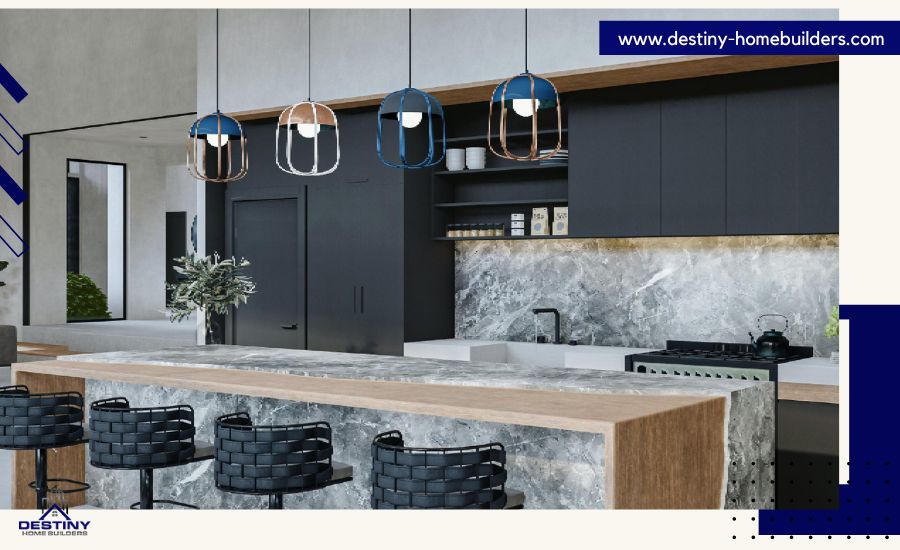
Maintenance Tips for Refaced Cabinets
Maintaining your refaced kitchen cabinets is crucial to keep them looking new and prolong their lifespan. Proper care and maintenance ensure that your investment in kitchen cabinet refacing continues to add value and beauty to your home for years to come.
How to Maintain Your Refaced Cabinets
To keep your refaced cabinets in top condition, regular maintenance is essential. Here are some key steps to help maintain their appearance and functionality.
- Regular Cleaning: Wipe down cabinet surfaces with a soft cloth and mild soap solution to remove dust, grease, and stains.
- Avoid Excessive Moisture: Keep cabinets dry by wiping up spills immediately and using exhaust fans to reduce humidity.
- Inspect and Tighten Hardware: Periodically check and tighten hinges, handles, and knobs to ensure they remain secure.
- Protect from Heat: Use heat shields or pads to protect cabinets near ovens or other heat-producing appliances.
Best Cleaning Products for Refaced Cabinets
Choosing the right cleaning products is important to avoid damaging the refaced surfaces. Here are some recommended cleaning products and tips.
- Mild Soap Solutions: Use gentle dish soap mixed with warm water for regular cleaning.
- Vinegar and Water Mixture: A solution of equal parts vinegar and water can help remove stubborn stains and grease.
- Avoid Harsh Chemicals: Do not use abrasive cleaners, bleach, or ammonia-based products as they can damage the finish.
- Specialty Cleaners: Consider using products specifically designed for laminate or wood veneer surfaces for deeper cleaning.
Comparing Refacing, Refinishing, and Replacing
When deciding to update your kitchen cabinets, it's important to understand the differences between refacing, refinishing, and replacing. Each option has its benefits and drawbacks, depending on your specific needs and goals for your kitchen.
Differences Between Refacing and Refinishing
Refacing and refinishing are two popular methods for updating kitchen cabinets, but they involve different processes and results.
- Refacing: Involves covering existing cabinet surfaces with new veneer or laminate and replacing doors and drawer fronts. This gives cabinets a completely new look without changing their structure.
- Refinishing: This entails sanding down the existing finish and applying new paint or stain. It refreshes the appearance but retains the original cabinet design and structure.
When to Choose Refacing Over Replacing
Choosing between refacing and replacing cabinets depends on several factors, including budget, desired outcome, and the condition of your existing cabinets.
- Refacing: Ideal if your cabinet boxes are in good condition, you like your current kitchen layout, and you want a cost-effective update.
- Replacing: Necessary if your cabinets are structurally damaged, you need a completely new layout, or you want to invest in high-end custom cabinetry.
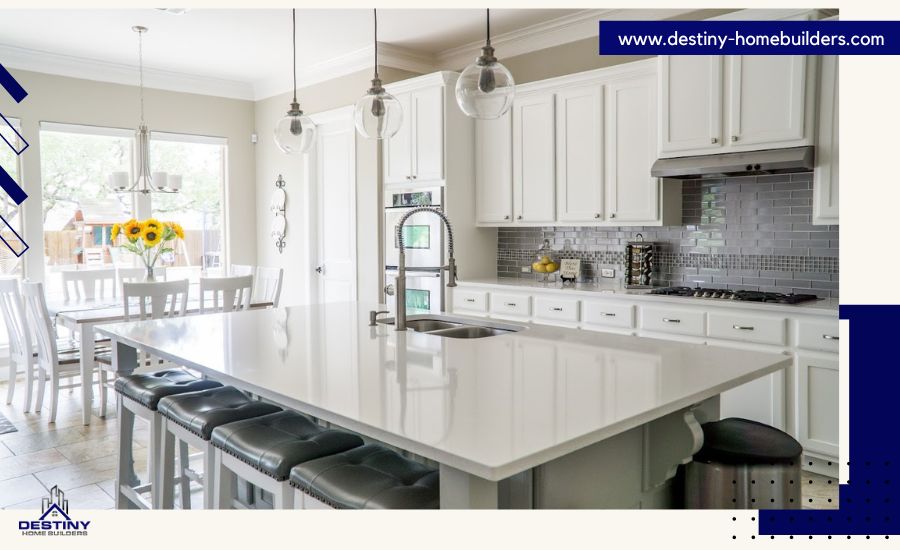
Common Mistakes to Avoid in Cabinet Refacing
Kitchen cabinet refacing can be a rewarding project, but there are common mistakes that can lead to poor results. Knowing these pitfalls can help you achieve a successful outcome.
Avoiding Pitfalls in the Refacing Process
Understanding and avoiding common mistakes can save time, money, and frustration. Here are some pitfalls to watch out for.
- Incorrect Measurements: Ensure accurate measurements to avoid material wastage and fitting issues.
- Poor Surface Preparation: Clean and sand surfaces thoroughly before applying new veneer or laminate.
- Using Low-Quality Materials: Invest in good quality materials for a durable and lasting finish.
- Ignoring Hardware Updates: Replace outdated or worn hardware to complement the new cabinet look.
Tips for a Successful Refacing Project
Following best practices and expert advice can help you achieve a professional-looking refacing project. Here are some tips for success.
- Plan Thoroughly: Create a detailed plan and timeline before starting the project.
- Use the Right Tools: Ensure you have all the necessary tools and materials before beginning.
- Take Your Time: Work slowly and carefully, especially when applying veneer or laminate.
- Seek Help When Needed: Don’t hesitate to consult professionals or watch instructional videos if you encounter challenges.
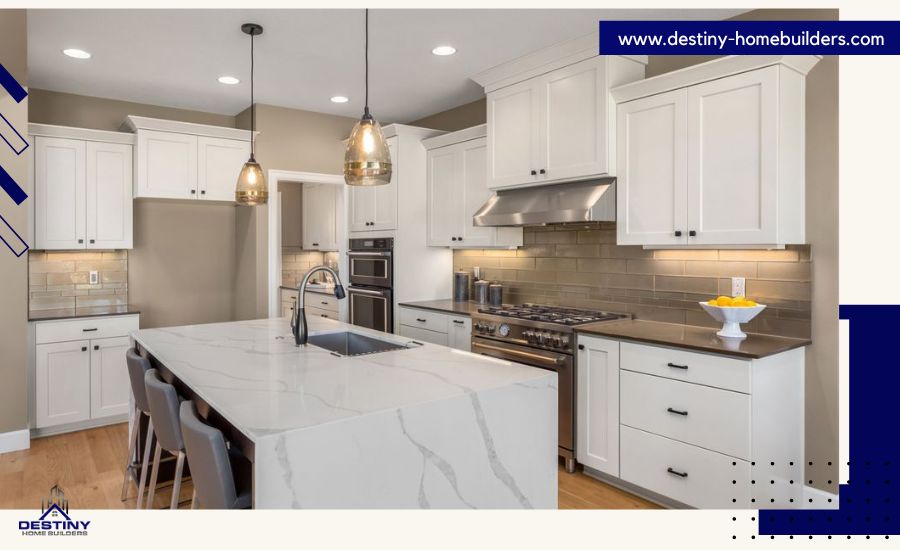
Final Thoughts on Affordable Kitchen Cabinet Refacing
Kitchen cabinet refacing is an affordable and effective way to transform your kitchen without the expense and disruption of a full remodel. By choosing the right materials, following proper procedures, and maintaining your refaced cabinets, you can enjoy a beautiful and refreshed kitchen for years to come.
Frequently Asked Questions
What is the cost of refacing the kitchen cabinet?
The cost of kitchen cabinet refacing varies based on factors such as the size of your kitchen, the materials used, and whether you hire professionals or do it yourself. On average, costs range from $100 to $200 per linear foot for laminate finishes, and up to $455 per linear foot for wood veneers.
How long does kitchen cabinet refacing take?
The duration of a kitchen cabinet refacing project depends on the size of your kitchen and whether you opt for DIY or professional services. Typically, professional refacing can be completed in 3 to 5 days, while DIY projects may take longer due to the learning curve and additional time needed for precise work.
Can I reface my kitchen cabinets myself?
Yes, you can reface your kitchen cabinets yourself if you have the necessary skills and tools. DIY refacing can save money, but it requires careful planning, accurate measurements, and attention to detail. If you're not confident in your abilities, hiring a professional may be a better option.
What materials are best for cabinet refacing?
Popular materials for cabinet refacing include laminate and wood veneer. Laminate is affordable and comes in many colors and patterns. Wood veneer offers a high-end, natural look. The best material depends on your budget and desired aesthetic.
Does refacing improve the durability of cabinets?
Refacing can improve the appearance and functionality of your cabinets, but it does not enhance the structural integrity of the cabinet boxes. If your cabinets are already in good condition, refacing can provide a fresh look and updated hardware. However, if the cabinets are structurally compromised, replacement may be necessary.
Get Started with Your Kitchen Cabinet Refacing Project
Ready to transform your kitchen with affordable kitchen cabinet refacing? Contact us today for a free consultation and let our experts help you achieve the kitchen of your dreams.

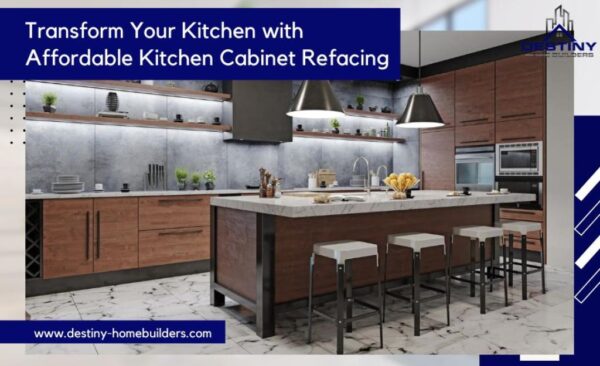

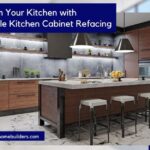

Comments: